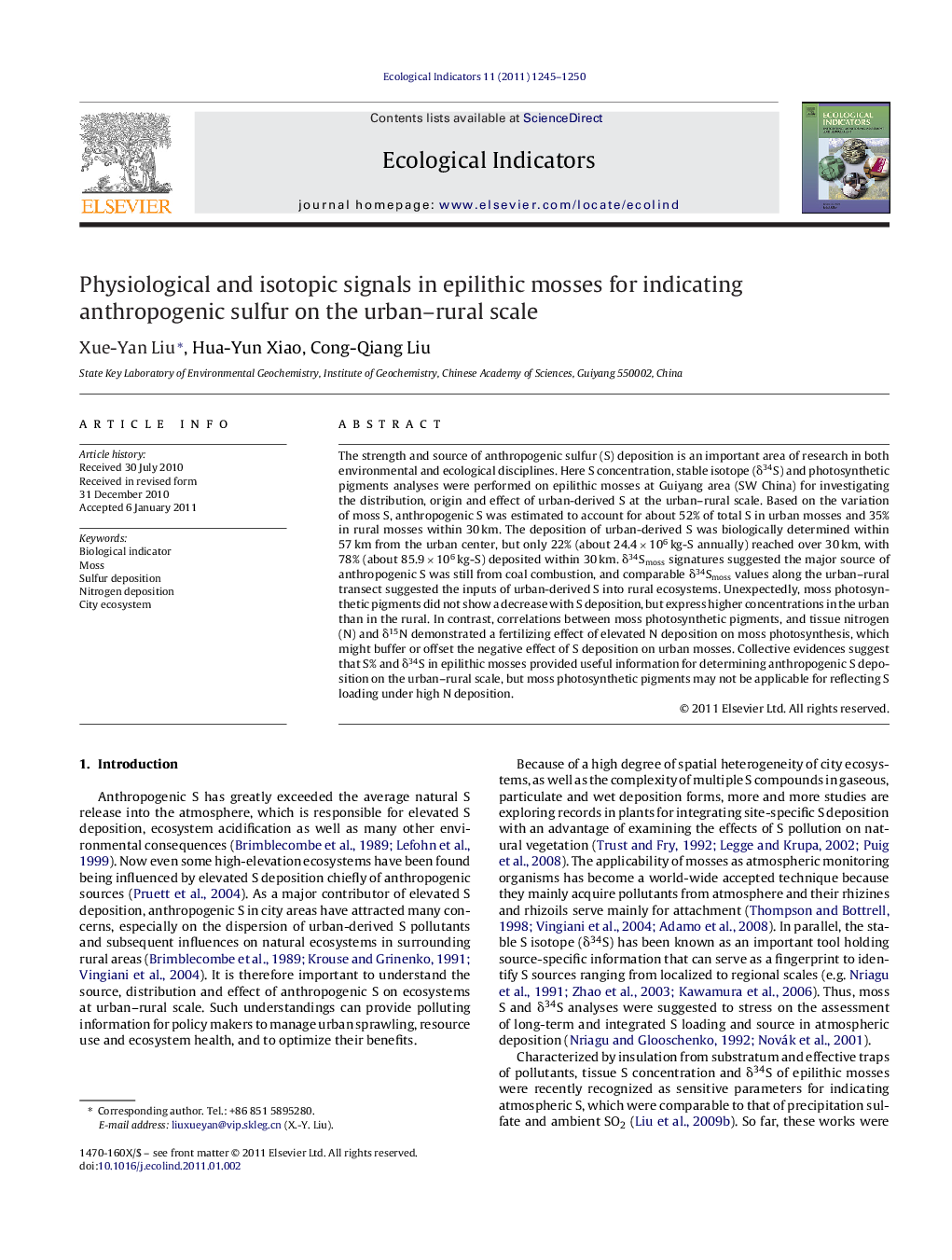| Article ID | Journal | Published Year | Pages | File Type |
|---|---|---|---|---|
| 4374060 | Ecological Indicators | 2011 | 6 Pages |
Abstract
The strength and source of anthropogenic sulfur (S) deposition is an important area of research in both environmental and ecological disciplines. Here S concentration, stable isotope (δ34S) and photosynthetic pigments analyses were performed on epilithic mosses at Guiyang area (SW China) for investigating the distribution, origin and effect of urban-derived S at the urban-rural scale. Based on the variation of moss S, anthropogenic S was estimated to account for about 52% of total S in urban mosses and 35% in rural mosses within 30 km. The deposition of urban-derived S was biologically determined within 57 km from the urban center, but only 22% (about 24.4 Ã 106 kg-S annually) reached over 30 km, with 78% (about 85.9 Ã 106 kg-S) deposited within 30 km. δ34Smoss signatures suggested the major source of anthropogenic S was still from coal combustion, and comparable δ34Smoss values along the urban-rural transect suggested the inputs of urban-derived S into rural ecosystems. Unexpectedly, moss photosynthetic pigments did not show a decrease with S deposition, but express higher concentrations in the urban than in the rural. In contrast, correlations between moss photosynthetic pigments, and tissue nitrogen (N) and δ15N demonstrated a fertilizing effect of elevated N deposition on moss photosynthesis, which might buffer or offset the negative effect of S deposition on urban mosses. Collective evidences suggest that S% and δ34S in epilithic mosses provided useful information for determining anthropogenic S deposition on the urban-rural scale, but moss photosynthetic pigments may not be applicable for reflecting S loading under high N deposition.
Related Topics
Life Sciences
Agricultural and Biological Sciences
Ecology, Evolution, Behavior and Systematics
Authors
Xue-Yan Liu, Hua-Yun Xiao, Cong-Qiang Liu,
